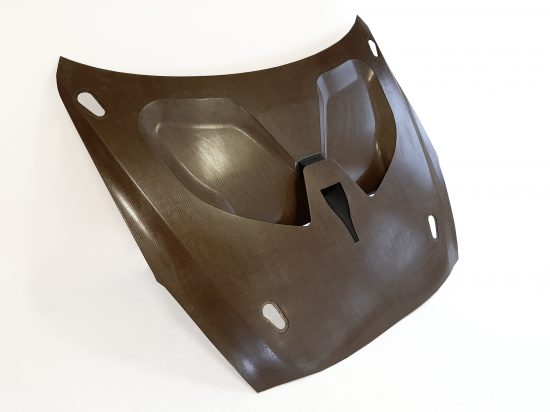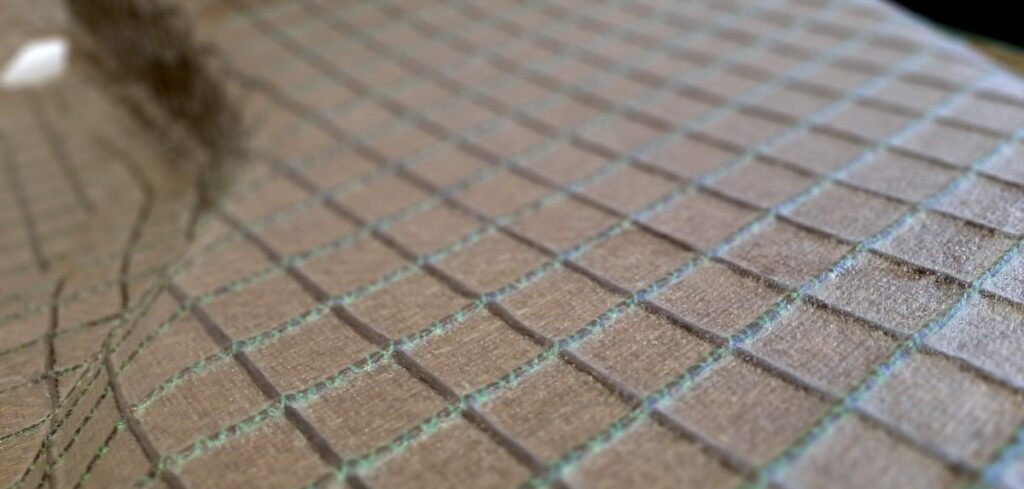UK-based Composites Evolution has teamed up with natural fiber reinforcement specialist Bcomp to launch a range of flax-epoxy prepreg materials, which the company states offer enhanced sustainability without compromising on performance.
The Evopreg ampliTex prepregs combine Composites Evolution’s Evopreg epoxy resin systems with Bcomp’s ampliTex flax reinforcements. To reach the full performance of natural fibers, the prepregs have been tailored to be compatible with Bcomp’s powerRibs reinforcement grid, which is said to provide the same stiffness and weight as thin-walled monolithic carbon-fiber parts, while decreasing the CO2 footprint by 85% and improving safety thanks to a blunt braking behavior which does not produce sharp edges.
Composites Evolution sales and marketing director Ben Hargreaves said, “Sustainability is an increasingly important factor for many of our customers – particularly those involved in motorsports and high-performance automotive applications. As you’d expect in these sectors though, sustainability can’t come at the expense of performance – the two must go hand-in-hand. This is something that other prepreggers can struggle with, as natural fibers behave very differently to carbon or glass, for example.”
One customer, Retrac Group, whose composites division is one of the UK’s most experienced composites engineering companies across motorsports, automotive and aerospace, recently used the new prepreg system to produce a demonstrator hood panel for a supercar project.
 Retrac project manager Alan Purves commented, “We’re seeing a growing interest in flax fiber composites, particularly in the motorsports and niche vehicle sectors. It is therefore essential that we have developed an in-depth understanding of the processing requirements and performance capabilities of these materials, and are ready to respond to our customers’ requirements. Being able to tap into the combined expertise and experience of both Composites Evolution and Bcomp is proving invaluable.
Retrac project manager Alan Purves commented, “We’re seeing a growing interest in flax fiber composites, particularly in the motorsports and niche vehicle sectors. It is therefore essential that we have developed an in-depth understanding of the processing requirements and performance capabilities of these materials, and are ready to respond to our customers’ requirements. Being able to tap into the combined expertise and experience of both Composites Evolution and Bcomp is proving invaluable.
“Our laminators found the Evopreg ampliTex materials very easy to use, with good drape and tack to the molds. The finished part looks great, and we shall showcase it later in the year.”
The hood demonstrator consisted of a two-part molding, with both inner and outer produced using Evopreg ampliTex EPC300-F300T 2×2 twill prepreg, backed with powerRibs. The air duct components were 3D-printed at Retrac, using their Stratasys Fortus 450MC machine. Bonded using polyurethane adhesive to minimize A-surface witnessing, the whole assembly weighs just 4kg.



